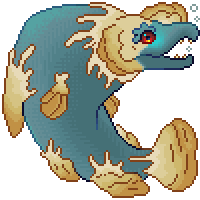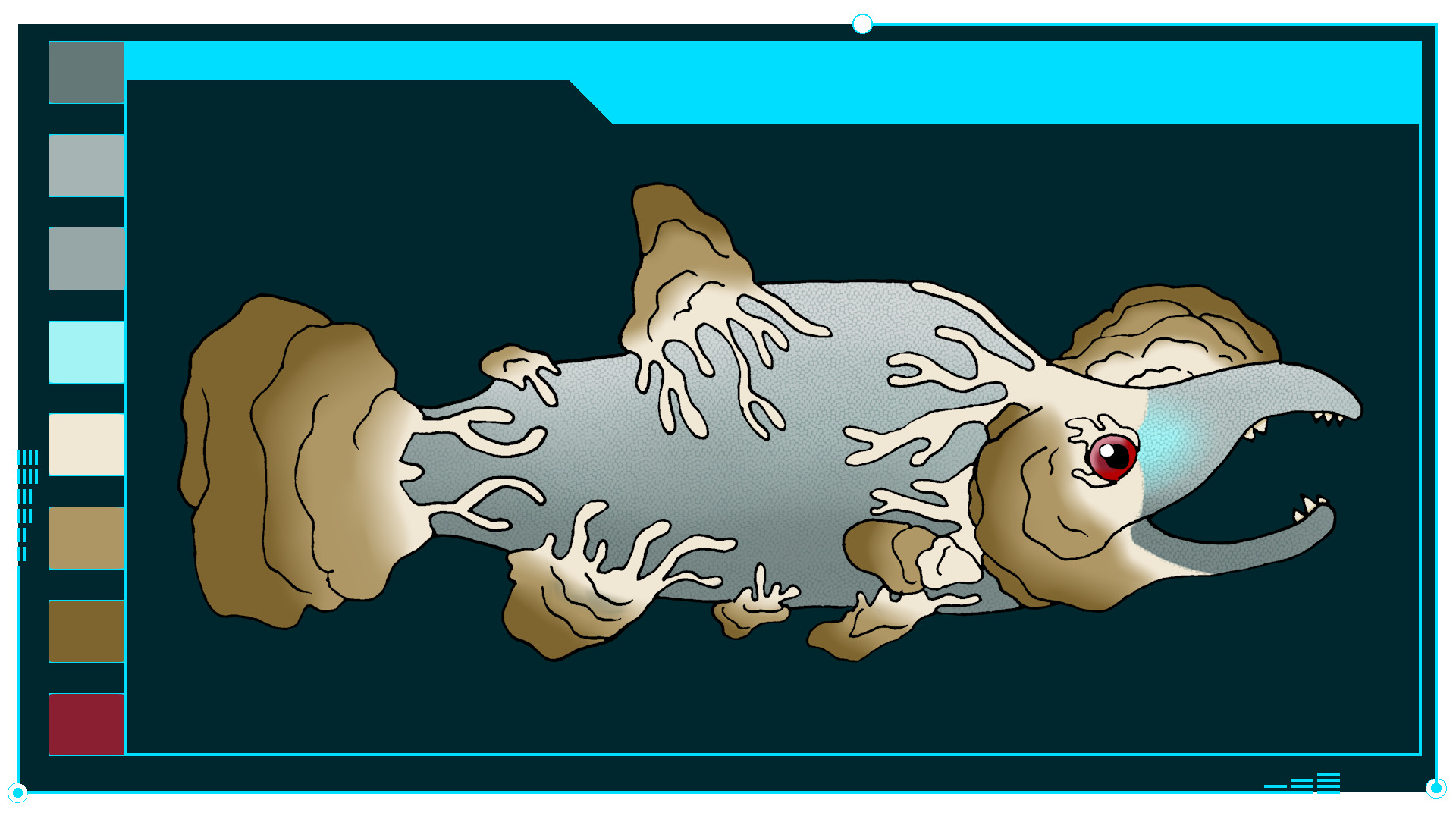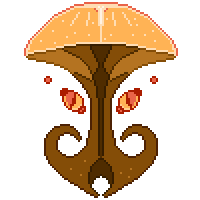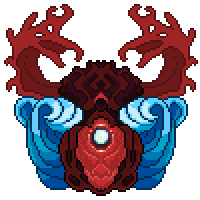
- Species Name: Blue-Cheeked Fungusfin
- Regions Found In: L'Hatzif, Ocean
- Carnivorous: The fish eats zooplankton and small bits of detritus, and the fungus siphons off some of the nutrients, converting them into new types of amino acids and sugars the fish wouldn't normally obtain from their diet.
- Height in metric and imperial: Females are the larger of the two sexes at 1 meter long (3 feet 5 inches), with the males averaging about 0.9 meters long (3 feet).
- Variants: The fungus that grows on their body has been observed in a wide range of colors and patterns.
- Use: Butcher into fish steaks and a random mushroom (color based, perhaps?)
The Blue-Cheeked Fungusfin is a species of diadromus fish found in L'Hatzif's rivers and along its coastline. It is notable for the deep mutualistic relationship it has with what is tentitively called the Fungusfin Polypore, a unique species of mushroom that colonizes individuals from birth. Egg sacs laid by female fish are coated in a thick mucus containing fungal spores, which grow up and around the fish's scales, gills, and head. The fungus not only protects the fish with its tough, woody exterior, but allows both organisms to get to a wider range of nutrients than they would be able to aqcuire alone. On a five year cycle, the fish migrate from inland water sources out towards the sea, the fungus along the gills filtering out excess salt from the water it breathes from.
In wild populations, fish without the protection and added digestive capabilities of the fungus do not survive for long. Captive specimens are able to survive without the fungus if the spores are sterilized on birth, but grow at a slower rate and require a diet containing all the nutrients the fungus would normally provide. The fungus is similarly stunted when separated from the fish host, fruiting bodies growing to only about 1/4th their normal size.
Natives have been cooking and eating the Blue-Cheeked Fungusfin for as long as records can show. The meat of the fish ranges from orange to red in color, marbled with white mycelium which serves as connective tissue. The fungus is wholly edible, though the outer edge of the fruiting bodies are described as inedibly tough, "like eating tree bark". Often, the fish is gutted, cleaned, and then smoked. The mushrooms can be left on the fish during this process. Alternatively, the fish can be used to create a rich soup stock, using all parts of the mushroom as well as the meat and bones of the fish. The tough and woody edges of the mushroom can be cleaned, dried, ground, and then steeped into a savory tea.



